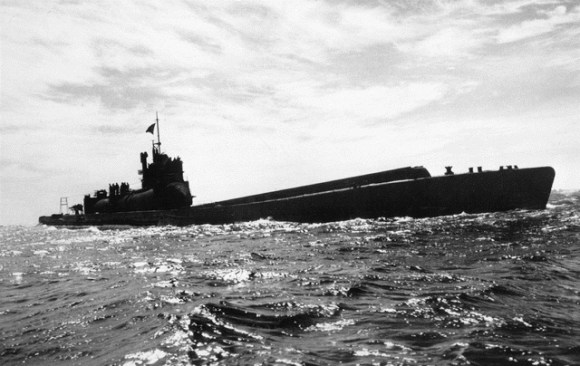
Japan and the nations the English-speaking RocketNews24 team hail from are on good terms these days, but just a few generations ago things weren’t so friendly. While the greatest scientific minds of Japan today focus on putting solar panels on the moon or turning algae into fuel, during the 1930s and 40s weapons development was a much bigger growth area than green energy.
Recently, the wreckage of one of the Japanese Imperial Navy’s most advanced pieces of equipment from World War II was discovered off the coast of Hawaii. What exactly was it? A submarine, or maybe an aircraft carrier?
It was both.
Researchers from the University of Hawaii recently came across an unusual bit of wreckage while scouring the sea floor. Initially discovered last August, both the US and Japanese government have now officially recognized the sunken hull as being that of the I-400, the very first completed vessel from the I-400 submarine line.
At the time of its completion in the shipyards of Hiroshima Prefecture’s city of Kure, the I-400 was the world’s largest submarine. At 122 meters (400 feet) long and with a displacement of 6,560 tons, it was the size of a destroyer, and capable of circling the globe one and a half times on a single fueling.
Aside from their impressive range, the recently found I-400, I-401 (also located off the coast of Hawaii in 2005), and I-402 (scuttled in the East China Sea following the war) all shared another unique characteristic: they were in fact submersible aircraft carriers.
▼ The hangar entrance of an I-400-class submarine/carrier
The I-400 was able to store three Aichi M6A Seiran dive bombers in its aircraft bay. The planes’ wings and tail could both fold for more compact storage, and a catapult was used to launch them from the sub after surfacing, eliminating the need for a full-sized flight deck.
At the end of World War II the US military took custody of the Imperial Navy’s fleet, and the I-400 was brought to Hawaii for analysis. Once researchers were finished examining the vessel, it was used for live fire target practice, eventually being sunk in 1946, after which it wasn’t seen again until the recent discovery of its remains.
Even today, the I-400 still stands as an engineering marvel, and its technological aspects are all the more compelling with the luxury of being able to observe them 67 years removed from their initial intent.
Source: Gadget Sokuho
Insert images: Wikipedia